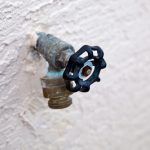What Is Orangeburg or Clay Tile?
 Orangeburg and clay tile are two types of materials that have been used in the construction of sewer pipes. While they both serve the same purpose of transporting wastewater, they have distinct differences in terms of composition, longevity, and overall performance. In this blog post, we will explore what Orangeburg and clay tile are, their pros and cons, and how to determine which option is best for your sewer system.
Orangeburg and clay tile are two types of materials that have been used in the construction of sewer pipes. While they both serve the same purpose of transporting wastewater, they have distinct differences in terms of composition, longevity, and overall performance. In this blog post, we will explore what Orangeburg and clay tile are, their pros and cons, and how to determine which option is best for your sewer system.
Introduction to Orangeburg Tile
Orangeburg tile, also known as bituminous fiber pipe, is a type of sewer pipe that was commonly used between the 1940s and 1970s. It is made from layers of wood pulp impregnated with hot coal-tar pitch, which gives it its characteristic dark brown or black color. Orangeburg pipe was popular due to its affordability and ease of installation. However, it has significant drawbacks that have led to its discontinuation.
Pros and Cons of Orangeburg Tile
One of the most significant advantages of Orangeburg tile is its cost-effectiveness. It is a relatively inexpensive material, making it appealing to homeowners on a budget. Additionally, Orangeburg pipe is lightweight, which makes it easy to transport and install. Its flexibility also allows for quick and straightforward installation, reducing labor hours and costs.
However, Orangeburg pipe has a notoriously short lifespan. On average, it only lasts between 30 and 50 years, far less than other sewer pipe materials. This limited durability is attributed to several factors. Firstly, the wood fiber materials used in its construction can degrade over time, especially when exposed to moisture. This degradation leads to pipe collapse, resulting in costly repairs or replacements. Secondly, Orangeburg pipe is prone to root intrusion, as its thin walls are susceptible to damage from nearby tree roots seeking a water source.
Introduction to Clay Tile
Clay tile, also known as vitrified clay pipe (VCP), has been used for sewer pipe construction for centuries. It is made from non-metal ceramic materials that are fired at high temperatures, creating a durable and inert material. Clay tile is usually reddish-brown in color and consists of interconnected pipe sections.
Pros and Cons of Clay Tile
One of the major advantages of clay tile is its longevity. When properly installed and maintained, clay tile pipes can last over 100 years. This long lifespan makes it an extremely cost-effective option for sewer pipe installation. Additionally, clay tile has a high resistance to chemicals commonly found in wastewater, ensuring its durability and structural integrity are maintained over time.
However, clay tile does have a few drawbacks. Firstly, it is a relatively heavy material, requiring heavy machinery for transportation and installation. This can increase labor costs and make installation more time-consuming. Secondly, clay tile pipes have rigid joints that may be susceptible to root intrusion if not properly sealed. Regular inspections and preventive maintenance are necessary to minimize potential issues.
Choosing the Right Option
When deciding between Orangeburg and clay tile for your sewer system upgrade from a Colorado Springs plumber , several factors should be considered. Firstly, the age of your property can play a significant role. If your home was built between the 1940s and 1970s, it is more likely to have Orangeburg pipe installed. In this case, it is strongly recommended to have the sewer system inspected for any signs of deterioration or damage.
Additionally, the presence of nearby trees should be taken into account. If your property is surrounded by large trees with extensive root systems, clay tile may be a more suitable option as it provides better resistance against root intrusion.
Lastly, budget considerations should be considered. While Orangeburg pipe may be more affordable upfront, the potential repair and replacement costs should not be overlooked. If you are looking for a more long-term solution, investing in clay tile may be a better option, despite its higher upfront costs.
Conclusion
Orangeburg pipe and clay tile are two materials commonly used in sewer pipe construction. While Orangeburg pipe offers affordability and easy installation, it has a relatively short lifespan and is prone to root intrusion. On the other hand, clay tile provides exceptional durability and resistance to chemicals, making it a cost-effective choice in the long run. By considering factors such as the age of your property, the presence of nearby trees, and your budget, you can make an informed decision on whether Orangeburg or clay tile is the right choice for your sewer system.
Got Questions? Let Us Help!




